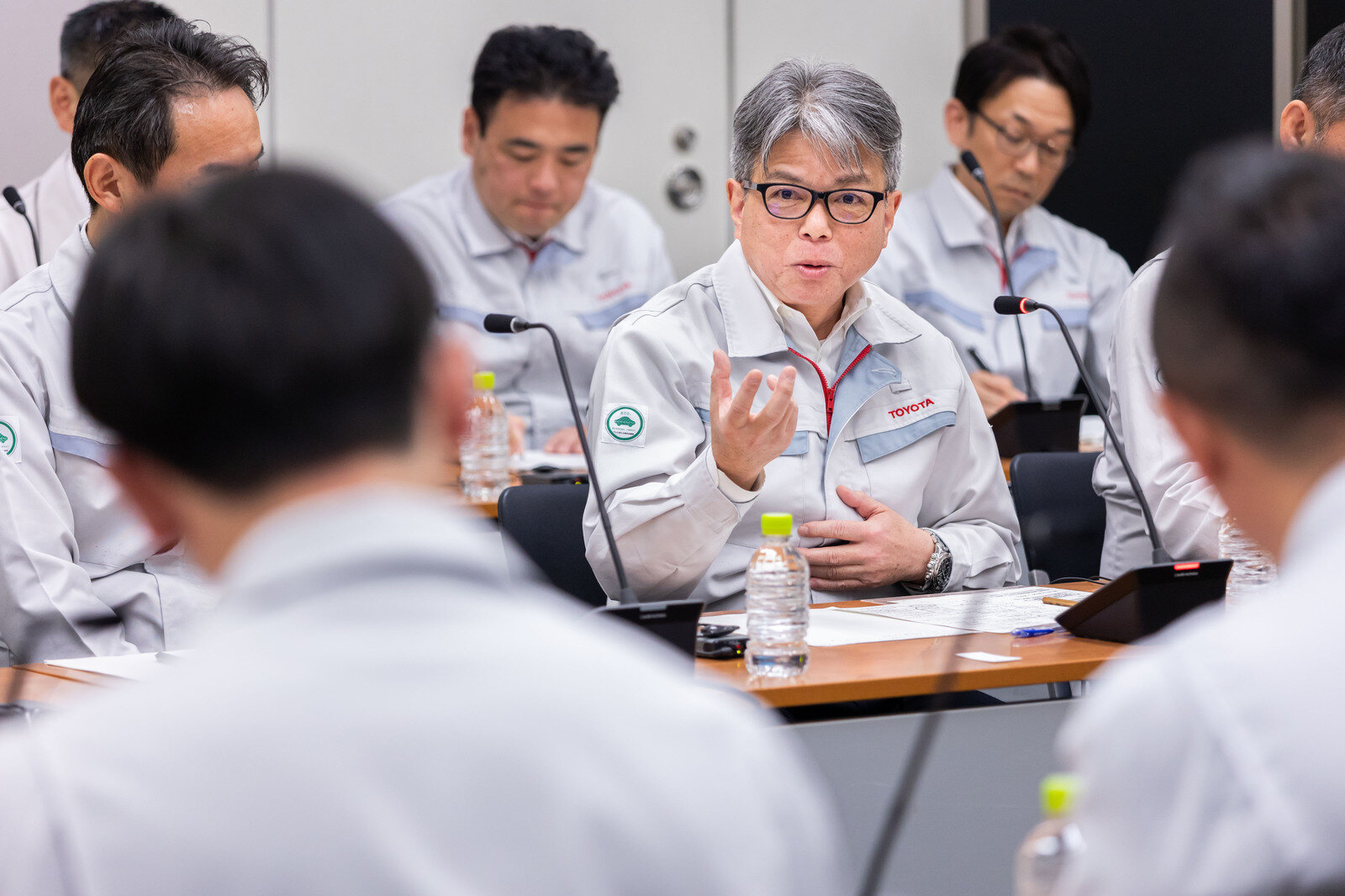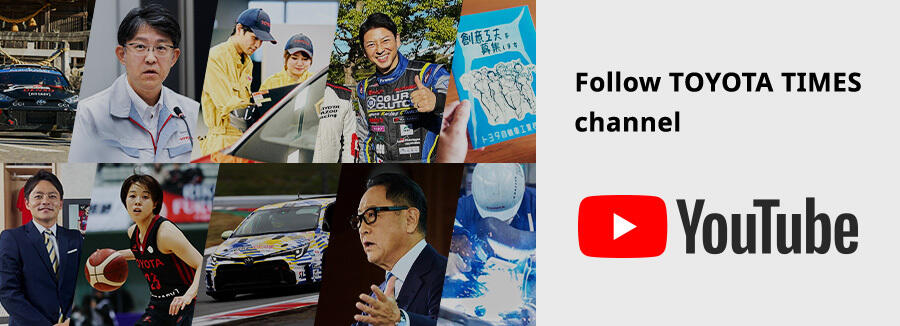
The second round of labor-management discussions--unusually held at the group level--focused on instilling a "sense of ownership." In an era of greater job choice, with work styles and personnel becoming ever more diverse, President Koji Sato spoke about the meaning of "uniformity."
Vice presidents share their thoughts
Having listened to the individual workplace discussions and the company-wide issues that emerged, executive vice presidents Yoichi Miyazaki and Hiroki Nakajima appealed for both sides to have a strong sense of urgency.
Vice President Miyazaki

If I may return once more to what was said here during our first round of talks, the level of earnings that we are currently enjoying is not a given. As such, if we assume that this is going to remain constant forever, we are going to have the rug pulled out from under us.
To maintain this situation, we have to keep moving one or two steps forward. We are currently working toward that by establishing the necessary environment and strengthening our foundations.
In our first conversation, we spoke about having a sense of urgency and using the second round of talks to discuss the concrete actions to be taken within each workplace.
Listening to what is being said today, I see that some teams have had similar conversations. Yet others, despite our fortunate position, say they are not being rewarded, or that taking on challenges is not worth their effort.
If we keep talking this way, we are going to have the rug pulled out from under us.
This is the message I most wanted to share with you.
We are doing many different things to give you a supportive push. For those who are doing their best with limited resources, we must explore broadening our evaluation criteria and rewarding them with appropriate allocation.
But what I wanted to hear from you was not, “We understood the need for a sense of urgency to sustain our current position—which is why the company should motivate us to work across established lines.”
Instead, what I really wanted to hear in this session was, “We already understand the need for urgency—we’re going to cross those barriers ourselves, and here is what we want the company to do.” I felt that we need to go a step further in that direction.
These labor-management discussions should really be a chance to take stock of the year’s efforts, but when we decided to hold the second round within individual workplaces, I think even those behind me (chief officers and presidents) rushed out to gather feedback.
We have to acknowledge the fact that our regular labor-management talks have not been able to draw out the kind of things we are hearing today. The same may be true for the union representatives. Had we been able to do that, I think we might have taken a further step forward here.
We are so focused on appearances that discussions don’t get to the heart of the matter, and we are unable to say things that are difficult to hear. But if our circumstances are not a given, and we feel a sense of urgency, we have to speak the hard truths.
Vice President Nakajima

As we noted in the first discussion, the key lies in translating talk into action.
We know the difficulty of acting. But even if we start small, with things we can accomplish and which yield results, we must have the courage to take action. We have seen relatively few such examples. I have personally held the role of president, and although I don’t mean to overlook my own shortcomings, I felt that reluctance to take action was a problem.
When visiting the front lines of various work sites, what I found most frightening was how often I heard that teams were too busy for personnel development.
We are where we are today thanks to the dedication with which past generations pursued human resource development. We are now reaping what they sowed for us.
Thinking about Toyota five or ten years from now and figuring out how we are going to plant the seeds and develop our people for the future, has slipped down our list of priorities.
Rather than saying we are too busy with the work in front of us, we should be putting personnel development at the top of our list and using the remaining time for our regular duties. If that leads to overflow, we can make changes to our work.
Finally, I think Toyota’s greatest strength is the idea of working for someone other than ourselves.
Hearing from various people today, and visiting the genba myself, I sense that our consideration for others is dwindling. That may also be leading to breakdowns in communication.
If we continue to engage in dialogue with both workers and management embracing Toyota’s shared philosophy of working for someone other than ourselves, I think it will help us to see what the other side is thinking, and what we can do to help make it happen.
The comments from both vice presidents prompted responses from the union’s Secretary-General Satoshi Mitsuda and Vice Chairman Keisuke Eshita.

